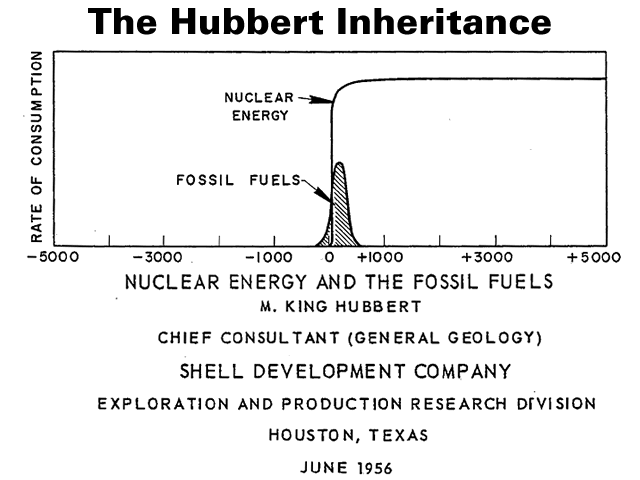
The Settled Science of geology incorporates the quaint notion that the Earth’s petroleum deposits were formed via the “anaerobic decomposition of buried dead organisms”.
Western mainstream petroleum geologists accordingly classify petroleum as a “fossil fuel” [aka decomposed dinosaur detritus] because these “dead organisms” are “typically” believed to have been “buried” millions of years ago.
Fossil fuels are fuels formed by natural processes such as anaerobic decomposition of buried dead organisms.
The age of the organisms and their resulting fossil fuels is typically millions of years, and sometimes exceeds 650 million years.
Fossil fuels contain high percentages of carbon and include coal, petroleum, and natural gas. They range from volatile materials with low carbon:hydrogen ratios like methane, to liquid petroleum to nonvolatile materials composed of almost pure carbon, like anthracite coal. Methane can be found in hydrocarbon fields, alone, associated with oil, or in the form of methane clathrates.
The theory that fossil fuels formed from the fossilized remains of dead plants by exposure to heat and pressure in the Earth’s crust over millions of years (see biogenic theory) was first introduced by Georg Agricola in 1556 and later by Mikhail Lomonosov in the 18th century.
However, the western mainstream petroleum geologists don’t explain why these anaerobic organisms [very thoughtfully] decided to discontinue decomposing the dinosaur detritus [millions of years ago] once they had created the petroleum deposits.
Nitrate-reducing bacterial strains (Pseudomonas sp. BS2201, BS2203 and Brevibacillus sp. BS2202) isolated from petroleum-contaminated soil were capable of degrading petroleum hydrocarbons under aerobic and anaerobic conditions.
Under aerobic conditions (a 10-day experiment in liquid media) the strains degraded 20–25% of the total extractable material (TEM), including up to 90–95% of all alkanes analyzed (n-C10–C35).
Under anaerobic conditions (a 50-day experiment) these organisms degraded 15–18% of the TEM, 20–25% of some alkanes, and 15–18% of selected polycyclic aromatic hydrocarbons. The strains also degraded saturated hydrocarbons under anaerobic conditions in the absence of nitrates as electron acceptors.
Degradation of petroleum hydrocarbons by facultative anaerobic bacteria under aerobic and anaerobic conditions
VG Grishchenkov, RT Townsend, TJ McDonald, RL Autenrieth, JS Bonner, AM Boronin
Process Biochemistry – Volume 35 – Issue 9 – May 2000 – Pages 889–896
http://www.sciencedirect.com/science/article/pii/S0032959299001454
Furthermore, these western mainstream petroleum geologists [schooled in the doctrines of uniformitarianism] don’t explain how the dead dinosaur detritus was collected together for mass burial or how [for example] this dead dinosaur detritus became buried 10,685 metres beneath the Gulf of Mexico.
The Tiber well is about 250 miles southeast of Houston in U.S. waters.
At 35,055 feet, it is as deep as Mount Everest is tall, not including more than 4,000 feet of water above it.World’s deepest oil well may rival Alaskan field in production – Chris Kahn – 23 Sept – 2009
http://lubbockonline.com/stories/090309/bus_489121723.shtmlThe Tiber Oil Field is a deepwater offshore oil field located in the Keathley Canyon block 102 of the United States sector of the Gulf of Mexico.
…
It required the drilling of a 10,685 m (35,056 ft) deep well under 1,260 m (4,130 ft) of water, making it one of the deepest wells ever drilled at the time of discovery.
Additionally, these western mainstream petroleum geologists don’t explain why the dead dinosaur detritus wasn’t naturally recycled within the biosphere.
The concept of “buried dead organisms” seems to be a strangely anthropomorphic concept promoted by uniformtarian geologists because burial is “rarely” achieved unless there is a natural disaster or human intervention.
Organisms are only rarely preserved as fossils in the best of circumstances, and only a fraction of such fossils have been discovered.
This is illustrated by the fact that the number of species known through the fossil record is less than 5% of the number of known living species, suggesting that the number of species known through fossils must be far less than 1% of all the species that have ever lived.
Because of the specialized and rare circumstances required for a biological structure to fossilize, only a small percentage of life-forms can be expected to be represented in discoveries, and each discovery represents only a snapshot of the process of evolution.
The absurdity of the situation is illustrated by Saudi Arabia’s Ghawar oil field which represents a [mass burial] grave containing over 16 cubic kilometres of decomposed dinosaur detritus.
Ghawar is an oil field located in Al-Ahsa Governorate, Eastern Province, Saudi Arabia.
Measuring 280 by 30 km (174 by 19 mi), it is by far the largest conventional oil field in the world, and accounts for more than half of the cumulative oil production of Saudi Arabia.
Ghawar is entirely owned and operated by Saudi Aramco, the state run Saudi oil company.
Relatively little technical information is publicly available, because the company and Saudi government closely guard field performance data and per-field production details.
Available information is predominantly historical (pre-nationalization), from incidental technical publications, or anecdotal.
…
Approximately 60–65% of all Saudi oil produced between 1948 and 2000 came from Ghawar.Cumulative production through early 2010 has exceeded 65 billion barrels.
It was estimated that Ghawar produced about 5 million barrels (790,000 m3) of oil a day (6.25% of global production) in 2009
…
In April 2010, Saad al-Treiki, Vice-President for Operations at Aramco, stated in a news conference reported in Saudi media that over 65 billion barrels (10.3 km3) have been produced from the field since 1951.Treiki further stated that the total reserves of the field had originally exceeded 100 billion barrels (16 km3).
The absurdity of the situation is demonstrated by the 496 oil and gas fields in which commercial reserves occur partly or entirely in crystalline basement rocks.
The modern Russian-Ukrainian theory of deep, abiotic petroleum origins is not controversial nor presently a matter of academic debate.
The period of debate about this extensive body of knowledge has been over for approximately two decades (Simakov 1986).
The modern theory is presently applied extensively throughout the former U.S.S.R. as the guiding perspective for petroleum exploration and development projects.
There are presently more than 80 oil and gas fields in the Caspian district alone which were explored and developed by applying the perspective of the modern theory and which produce from the crystalline basement rock. (Krayushkin, Chebanenko et al. 1994)
Similarly, such exploration in the western Siberia cratonic-rift sedimentary basin has developed 90 petroleum fields of which 80 produce either partly or entirely from the crystalline basement.
The exploration and discoveries of the 11 major and 1 giant fields on the northern flank of the Dneiper-Donets basin have already been noted.
There are presently deep drilling exploration projects under way in Azerbaijan, Tatarstan, and Asian Siberia directed to testing potential oil and gas reservoirs in the crystalline basement.
Considerations about recent predictions of impending shortages of petroleum evaluated from the perspective of modern petroleum science
J. F. Kenney
“Special Edition on the Future of Petroleum” in Energy World,
British Institute of Petroleum, London, June 1996.
http://www.gasresources.net/energy_resources.htm/The Togur-Tyumen TPS is largely oil-productive;
the amount of discovered oil equals 11.8 BB (Petroconsultants, 1996).
Gas reserves are relatively small (3.7 TCF).
These oil and gas reserves are contained in fields in which the major reservoirs are in the Tyumen Formation and directly underlying basement rocks.Petroleum Geology and Resources of the West Siberian Basin, Russia
Gregory F. Ulmishek – U.S. Geological Survey – 2003 – Bulletin 2201-G
http://pubs.usgs.gov/bul/2201/G/B2201-G.pdfCrystalline crust of the Earth is the basement of 60 sedimentary basins with commercial oil and gas deposits in 29 countries of the world.
Additionally, there are 496 oil and gas fields in which commercial reserves occur partly or entirely in the crystalline rocks of that basement.
55 of them are classified as giant fields (>500 Mbbls) with 16 non-associated gas, 9 gas-oil and 30 undersaturated oil fields among them (Table 5).Abiogenic Deep Origin of Hydrocarbons and Oil and Gas Deposits Formation
Vladimir G. Kutcherov – Intech – 2013
http://www.intechopen.com/download/pdf/41889
Needless to say, the western [uniformtarian] mainstream geologists cling to their belief that petroleum is a fossil fuel “formed almost exclusively” from “organic material” [aka decomposed dinosaur detritus] and dismiss the abiogenic theory of hydrocarbons.
Most [citation needed] geologists now consider the abiogenic formation of petroleum to have insufficient scientific support and hold that fossil fuels are formed almost exclusively from organic material.
http://en.wikipedia.org/wiki/Abiogenic_petroleum_origin
The theory of the abiogenic deep origin of hydrocarbons recognizes that the petroleum is a primordial material of deep origin [Kutcherov, Krayushkin 2010].
This theory explains that hydrocarbon compounds generate in the asthenosphere of the Earth and migrate through the deep faults into the crust of the Earth. There they form oil and gas deposits in any kind of rock in any kind of the structural position.
Abiogenic Deep Origin of Hydrocarbons and Oil and Gas Deposits Formation
Vladimir G. Kutcherov – Intech – 2013
http://www.intechopen.com/download/pdf/41889
Marion King Hubbert believed petroleum was a finite fossil fuel.
Nuclear Energy and the Fossils Fuels – 1956 – Marion King Hubbert
Shell Development Company
http://www.hubbertpeak.com/hubbert/1956/1956.pdf
Marion King Hubbert also believed the Earth’s total endowment of crude oil was fixed at 1,250 billion barrels [about 199 cubic kilometres].
Nuclear Energy and the Fossils Fuels – 1956 – Marion King Hubbert
Shell Development Company
http://www.hubbertpeak.com/hubbert/1956/1956.pdf
In 1956 Marion King Hubbert presented his Malthusian theory of Peak Oil which predicted the worldwide production of crude oil would peak around the year 2000.
Hubbert argued that a “progressive exhaustion” of the Earth’s finite crude oil reserves would occur because “industrial exploitation” were draining the reserves at a far greater rate than the natural “geological processes” were replenishing the reserves.
Nuclear Energy and the Fossils Fuels – 1956 – Marion King Hubbert
Shell Development Company
http://www.hubbertpeak.com/hubbert/1956/1956.pdfMalthusian theory is a recurrent theme in many social science venues.
John Maynard Keynes, in Economic Consequences of the Peace, opens his polemic with a Malthusian portrayal of the political economy of Europe as unstable due to Malthusian population pressure on food supplies.
Many models of resource depletion and scarcity are Malthusian in character: the rate of energy consumption will outstrip the ability to find and produce new energy sources, and so lead to a crisis.
http://en.wikipedia.org/wiki/Malthusianism
Peak oil, an event based on M. King Hubbert’s theory, is the point in time when the maximum rate of extraction of petroleum is reached, after which the rate of production is expected to enter terminal decline.
Peak oil theory is based on the observed rise, peak, (sometimes rapid) fall, and depletion of aggregate production rate in oil fields over time.
http://en.wikipedia.org/wiki/Peak_oil
Accelerated Depletion: Assessing Its Impacts on Domestic Oil and Natural Gas Prices and Production – July 2000 – Energy Information Administration
http://www.eia.gov/oiaf/servicerpt/depletion/pdf/sroiaf(2000)04.pdf
The prospect of Peak Oil was a shocking concept in 1956 because the “industrial exploitation” of crude oil had only began in 1856.
The world’s first refinery opened at Ploiești, Romania, in 1856-1857, with United States investment.
…
In the 19th century, refineries in the U.S. processed crude oil primarily to recover the kerosene.There was no market for the more volatile fraction, including gasoline, which was considered waste and was often dumped directly into the nearest river.
The invention of the automobile shifted the demand to gasoline and diesel, which remain the primary refined products today.
http://en.wikipedia.org/wiki/Oil_refinery#History
Nuclear Energy and the Fossils Fuels – 1956 – Marion King Hubbert
Shell Development Company
http://www.hubbertpeak.com/hubbert/1956/1956.pdf
However, Marion King Hubbert sugar coated the bitter pill of Peak Oil by predicting the world was “on the threshold” of a nuclear power era where energy consumption would “be at least an order of magnitude greater than that made possible by the fossils fuel”.
Nuclear Energy and the Fossils Fuels – 1956 – Marion King Hubbert
Shell Development Company
http://www.hubbertpeak.com/hubbert/1956/1956.pdf
Arguably, Marion King Hubbert’s nuclear power prediction reflected the optimism of the 1950s.
The 1950s was an era when America had high hopes for the future.
Technology was to bring the common man a four-day work week, gobs of leisure time and modern conveniences to rival the lifestyles of ruling classes from earlier times.
Optimism is molded in “1950s Modern’ – Tony Sienzant – The Morning Call – 4 Feb 2001
http://articles.mcall.com/2001-02-04/entertainment/3346832_1_isamu-noguchi-chair-diamondBuilding Atomic Vegas
National Atomic Testing Museum
http://www.nationalatomictestingmuseum.org/exhibit/Site/enter.html
But this nuclear power optimism began to dim in 1958 as the promoters of the nuclear Non-Proliferation Treaty implied nuclear power could drive the proliferation of nuclear weapons.
The Treaty on the Non-Proliferation of Nuclear Weapons, commonly known as the Non-Proliferation Treaty or NPT, is an international treaty whose objective is to prevent the spread of nuclear weapons and weapons technology, to promote cooperation in the peaceful uses of nuclear energy, and to further the goal of achieving nuclear disarmament and general and complete disarmament.
…
The NPT process was launched by Frank Aiken, Irish Minister for External Affairs, in 1958.It was opened for signature in 1968, with Finland the first State to sign.
Accession became nearly universal after the end of the Cold War and of South African apartheid.
In 1992 China and France acceded to the NPT, the last of the five nuclear powers recognized by the treaty to do so.
In 1995 the treaty was extended indefinitely.
After Brazil acceded to the NPT in 1998 the only remaining non-nuclear-weapons state which had not signed was Cuba, which joined NPT in 2002.
http://en.wikipedia.org/wiki/Nuclear_Nonproliferation_Treaty
The optimism in nuclear power finally withered in the popular imagination in 1979 when it became evident that nuclear power is not a failsafe technology [in its current incarnation].
The Three Mile Island accident was a partial nuclear meltdown that occurred on March 28, 1979 in one of the two Three Mile Island nuclear reactors in Dauphin County, Pennsylvania, United States.
It was the worst accident in U.S. commercial nuclear power plant history.
The incident was rated a five on the seven-point International Nuclear Event Scale: Accident With Wider Consequences.
…
The accident at the plant occurred twelve days after the release of the movie The China Syndrome.
…
After the release of the film, Fonda began lobbying against nuclear power.
The nuclear disasters at Chernobyl in 1986 and Fukushima in 2011 further reinforced the risks associated with nuclear power in the popular imagination.
The Chernobyl disaster was a catastrophic nuclear accident that occurred on 26 April 1986 at the Chernobyl Nuclear Power Plant in Ukraine (then officially the Ukrainian SSR), which was under the direct jurisdiction of the central authorities of the Soviet Union.
An explosion and fire released large quantities of radioactive particles into the atmosphere, which spread over much of the western USSR and Europe.
…
In the aftermath of the accident, 237 people suffered from acute radiation sickness (ARS), of whom 31 died within the first three months.
…
Of the 72,000 Russian Emergency Workers being studied, 216 non-cancer deaths are attributed to the disaster, between 1991 and 1998.[citation needed]
Of all 66,000 Belarusian emergency workers, by the mid-1990s only 150 (roughly 0.2%) were reported by their government as having died.
In contrast, 5,722 casualties were reported among Ukrainian clean-up workers up to the year 1995, by the National Committee for Radiation Protection of the Ukrainian Population.http://en.wikipedia.org/wiki/Chernobyl_disaster
The Fukushima Daiichi nuclear disaster was a nuclear disaster at the Fukushima I Nuclear Power Plant that began on 11 March 2011, resulting in a meltdown of three of the plant’s six nuclear reactors.
…
The Fukushima Nuclear Accident Independent Investigation Commission found the nuclear disaster was “manmade” and that its direct causes were all foreseeable.
The report also found that the plant was incapable of withstanding the earthquake and tsunami.
TEPCO, regulators Nuclear and Industrial Safety Agency (NISA) and NSC and the government body promoting the nuclear power industry (METI), all failed to meet the most basic safety requirements, such as assessing the probability of damage, preparing for containing collateral damage from such a disaster, and developing evacuation plans.
…
There are no clear plans for decommissioning the plant, but the plant management estimate is thirty or forty years.On 22 July 2013, more than two years after the incident, it was revealed that the plant is leaking radioactive water into the Pacific Ocean.
…
On 13 February 2014, TEPCO reported 37,000 becquerels (1.0 microcurie) of cesium-134 and 93,000 becquerels (2.5 microcuries) of cesium-137 were detected per liter of groundwater sampled from a monitoring well.http://en.wikipedia.org/wiki/Fukushima_Daiichi_nuclear_disaster
The net effect of these nuclear power disasters was to slow the growth in nuclear generating capacity to such an extent that nuclear generating capacity began to decline after 2010.
On the other hand, world crude oil production has continued its unrelenting growth since 1956.
Marion King Hubbert’s Peak Oil prediction that the production of crude oil would peak at about 12.5 billion barrels [nearly 2 cubic kilometres] per year around the year 2,000 has not occurred.
The world crude oil production for the year 2,000 [as reported by the EIA] was about 25.03 billion barrels [3.98 cubic kilometres] and by 2013 this figure had risen to 27.78 billion barrels [4.42 cubic kilometres].
U.S. Energy Information Administration – Monthly Energy Review
http://www.eia.gov/emeu/mer/pdf/pages/sec11_5.pdfConvert barrel [US, petroleum] to cubic kilometre
http://www.convertunits.com/from/barrel+%5BUS,+petroleum%5D/to/cubic+kilometres
Upon reflection the Peak Oil prediction made by Marion King Hubbert was only a wild guess because nobody can actually quantify the Earth’s crude oil reserves or the rate at which they naturally accumulate and recharge.
There have been numerous reports in recent times, of oil and gas fields not running out at the expected time, but instead showing a higher content of hydrocarbons after they had already produced more than the initially estimated amount.
This has been seen in the Middle East, in the deep gas wells of Oklahoma, on the Gulf of Mexico coast, and in other places.
It is this apparent refilling during production that has been responsible for the series of gross underestimate of reserves that have been published time and again, the most memorable being the one in the early seventies that firmly predicted the end of oil and gas globally by 1987, a prediction which produced an energy crisis and with that a huge shift in the wealth of nations.
Are Oil Wells Recharging Themselves? – Al Fin – 05 March 2012
http://oilprice.com/Energy/Energy-General/Are-Oil-Wells-Recharging-Themselves.htmlDEEP UNDERWATER, and deeper underground, scientists see surprising hints that gas and oil deposits can be replenished, filling up again, sometimes rapidly.
Although it sounds too good to be true, increasing evidence from the Gulf of Mexico suggests that some old oil fields are being refilled by petroleum surging up from deep below, scientists report.
That may mean that current estimates of oil and gas abundance are far too low.
Recent measurements in a major oil field show “that the fluids were changing over time; that very light oil and gas were being injected from below, even as the producing [oil pumping] was going on,” said chemical oceanographer Mahlon “Chuck” Kennicutt.
“They are refilling as we speak. But whether this is a worldwide phenomenon, we don’t know.”
Also not known, Kennicutt said, is whether the injection of new oil from deeper strata is of any economic significance, whether there will be enough to be exploitable.
The discovery was unexpected, and it is still “somewhat controversial” within the oil industry.
Kennicutt, a faculty member at Texas A&M University, said it is now clear that gas and oil are coming into the known reservoirs very rapidly in terms of geologic time.
The inflow of new gas, and some oil, has been detectable in as little as three to 10 years.
In the past, it was not suspected that oil fields can refill because it was assumed the oil formed in place, or nearby, rather than far below.
Robert Cooke – 15 April 2002
http://www.newsday.com/oil-fields-free-refill-seepage-from-the-depths-in-some-reservoirs-hints-at-greater-resources-than-expected-1.308663
After nearly 160 years of “industrial exploitation” the BP Statistical Review of World Energy indicates that global proved reserves of oil have increased by 27% during the last decade to reach a total of 1,687.9 billion barrels at the end of 2013.
Total world proved oil reserves reached 1687.9 billion barrels at the end of 2013, sufficient to meet 53.3 years of global production.
The largest additions to reserves came from Russia, adding 900 million barrels and Venezuela adding 800 million barrels.
OPEC members continue to hold the majority of reserves, accounting for 71.9% of the global total. South & Central America continues to hold the highest R/P ratio.
Over the past decade, global proved reserves have increased by 27%, or over 350 billion barrels.
BP Statistical Review of World Energy – June 2014
http://www.bp.com/content/dam/bp/pdf/Energy-economics/statistical-review-2014/BP-statistical-review-of-world-energy-2014-full-report.pdf
However, the veracity of any reserve estimates is debatable.
Relatively little technical information is publicly available, because the company and Saudi government closely guard field performance data and per-field production details.
Available information is predominantly historical (pre-nationalization), from incidental technical publications, or anecdotal.
http://en.wikipedia.org/wiki/Ghawar_Field
The sudden revisions in OPEC reserves, totaling nearly 300 bn barrels, have been much debated. Some of it is defended partly by the shift in ownership of reserves away from international oil companies, some of whom were obliged to report reserves under conservative US Securities and Exchange Commission rules.
The most prominent explanation of the revisions is prompted by a change in OPEC rules which set production quotas (partly) on reserves. In any event, the revisions in official data had little to do with the actual discovery of new reserves.
Total reserves in many OPEC countries hardly changed in the 1990s.
Official reserves in Kuwait, for example, were unchanged at 96.5 Gbbl (including its share of the Neutral Zone) from 1991 to 2002, even though the country produced more than 8 Gbbl and did not make any important new discoveries during that period.
The case of Saudi Arabia is also striking, with proven reserves estimated at between 260 and 264 billion barrels in the past 18 years, a variation of less than 2%, while extracting approximately 60 billion barrels during this period.
Sadad al-Huseini, former head of exploration and production at Saudi Aramco, estimates 300 Gbbl of the world’s 1,200 Gbbl of proven reserves should be recategorized as speculative resources, though he did not specify which countries had inflated their reserves.
Dr. Ali Samsam Bakhtiari, a former senior expert of the National Iranian Oil Company, has estimated that Iran, Iraq, Kuwait, Saudi Arabia and the United Arab Emirates have overstated reserves by a combined 320–390bn barrels and has said, “As for Iran, the usually accepted official 132 billion barrels is almost one hundred billion over any realistic assay.”
Petroleum Intelligence Weekly reported that official confidential Kuwaiti documents estimate reserves of Kuwait were only 48 billion barrels, of which half were proven and half were possible. The combined value of proven and possible is half of the official public estimate of proven reserves.
http://en.wikipedia.org/wiki/Oil_reserves
One difficulty in forecasting the date of peak oil is the opacity surrounding the oil reserves classified as ‘proven’.
Many worrying signs concerning the depletion of proven reserves have emerged in recent years.
This was best exemplified by the 2004 scandal surrounding the ‘evaporation’ of 20% of Shell’s reserves.
For the most part, proven reserves are stated by the oil companies, the producer states and the consumer states.
All three have reasons to overstate their proven reserves: oil companies may look to increase their potential worth; producer countries gain a stronger international stature; and governments of consumer countries may seek a means to foster sentiments of security and stability within their economies and among consumers.
…
On the other hand, investigative journalist Greg Palast argues that oil companies have an interest in making oil look more rare than it is, to justify higher prices.This view is contested by ecological journalist Richard Heinberg.
Other analysts argue that oil producing countries understate the extent of their reserves to drive up the price.
In November 2009, a senior official at the IEA alleged that the United States had encouraged the international agency to manipulate depletion rates and future reserve data to maintain lower oil prices.
In 2005, the IEA predicted that 2030 production rates would reach 120,000,000 barrels per day, but this number was gradually reduced to 105,000,000 barrels per day.
The IEA official alleged industry insiders agree that even 90 to 95,000,000 barrels per day might be impossible to achieve.
Although many outsiders had questioned the IEA numbers in the past, this was the first time an insider had raised the same concerns.
A 2008 analysis of IEA predictions questioned several underlying assumptions and claimed that a 2030 production level of 75,000,000 barrels per day (comprising 55,000,000 barrels of crude oil and 20,000,000 barrels of both non-conventional oil and natural gas liquids) was more realistic than the IEA numbers.
Hubbert’s Peak Oil prediction has been deemed “premature” and the current industry consensus appears to believe that market forces [i.e. “price”] can be relied upon to effectively manage the supply and demand for petroleum products.
Mostly due to the development of new production techniques and the exploitation of unconventional supplies, Hubbert’s original predictions for world production proved premature.
…
In 2009, Dr. Christoph Rühl, chief economist of BP, argued against the peak oil hypothesis:Physical peak oil, which I have no reason to accept as a valid statement either on theoretical, scientific or ideological grounds, would be insensitive to prices. (…)
In fact the whole hypothesis of peak oil – which is that there is a certain amount of oil in the ground, consumed at a certain rate, and then it’s finished – does not react to anything….
Therefore there will never be a moment when the world runs out of oil because there will always be a price at which the last drop of oil can clear the market.
…
Peak oil has been predicted for 150 years.
It has never happened, and it will stay this way.…
The oil question is about price and not the basic availability.
However, the Malthusian prospect of Peak Oil still shuffles in the shadows.
There is a general consensus between industry leaders and analysts that world oil production will peak between 2010 and 2030, with a significant chance that the peak will occur before 2020.
Dates after 2030 are considered implausible.
Determining a more specific range is difficult due to the lack of certainty over the actual size of world oil reserves.
Unconventional oil is not currently predicted to meet the expected shortfall even in a best-case scenario. For unconventional oil to fill the gap without “potentially serious impacts on the global economy”, oil production would have to remain stable after its peak, until 2035 at the earliest.
The lurking Malthusian dangers associated with Peak Oil have presented governments with a moral imperative that justifies implementing preventative and palliative measures.
Accordingly, in the interests of the populace, governments are claiming their Hubbert Inheritance by taxing oil in [just about] every conceivable way possible.
The European Union Emission Trading Scheme (or EU ETS) is the largest multi-national, greenhouse gas emissions trading scheme in the world.
…
For Phase III (2013–20), the European Commission has proposed a number of changes, including:
the setting of an overall EU cap, with allowances then allocated to EU members;
tighter limits on the use of offsets;
unlimited banking of allowances between Phases II and III;
and a move from allowances to auctioning.http://en.wikipedia.org/wiki/Emissions_trading#European_Union
In 2012-13 revenues dropped by around 45% to £6.1 billion and then fell again in 2013-14 by around 25% to £4.7 billion as a result of lower production and higher expenditure.
Statistics of Government revenues from UK oil and gas production
https://www.gov.uk/government/uploads/system/uploads/attachment_data/file/323371/140620_UK_oil_and_gas_tables_for_publication_in_June_2014.pdfMotoring taxation in the United Kingdom consists primarily of vehicle excise duty (commonly known as VED, vehicle tax, car tax, and road tax), which is levied on vehicles registered in the UK and hydrocarbon oil duty (normally referred to as fuel tax) which is levied on the fuel used by motor vehicles.
VED and fuel tax raised approximately GB£32 billion in 2009, a further £4 billion was raised from the value added tax on fuel purchases.
Motoring-related taxes for fiscal year 2011/12, including fuel duties and VED, are estimated that will amount to more than GB£38 billion, representing almost 7% of total UK taxation.
Road pricing in the form of congestion charges are in place in London and Durham.
http://en.wikipedia.org/wiki/Motoring_taxation_in_the_United_Kingdom
British motorists are shouldering the heaviest tax burden in the EU at the pumps, official figures reveal.
Sixty per cent of the price of unleaded petrol and 58 per cent of the cost of diesel is made up of duties and VAT in Britain, the highest percentages in the European Union.
Insurance Premium Tax (IPT) is a tax on general insurance premiums.
There are 2 rates:
a standard rate 6%
a higher rate 20% – for travel insurance, mechanical/electrical appliances insurance and some vehicle insurance
Clearly, consumers started experiencing the shock of Peak Oil pricing when governments started demanding their Hubbert Inheritance.
With governmental assistance Peak Oil pricing has become a self-fulfilling prophecy all because Settled Science promotes the quaint notion that oil is an ancient and very finite fossil fuel derived from decomposing dinosaur detritus.

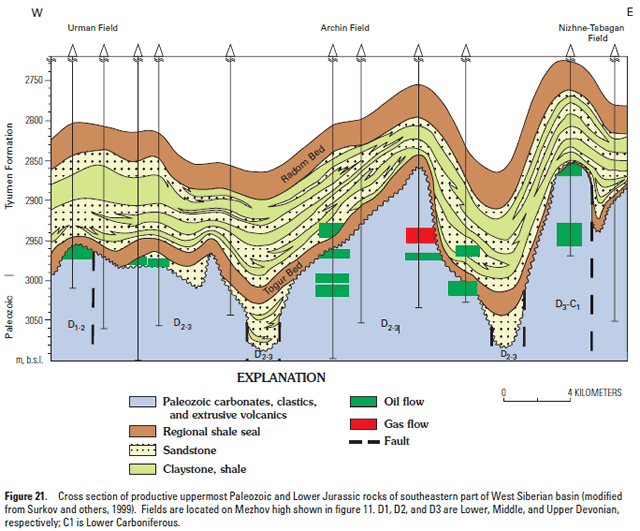
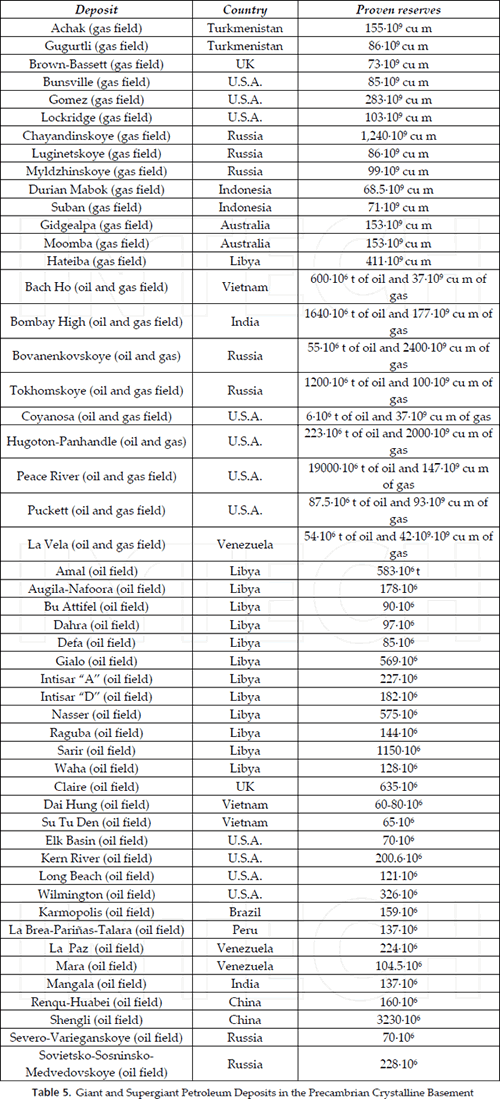
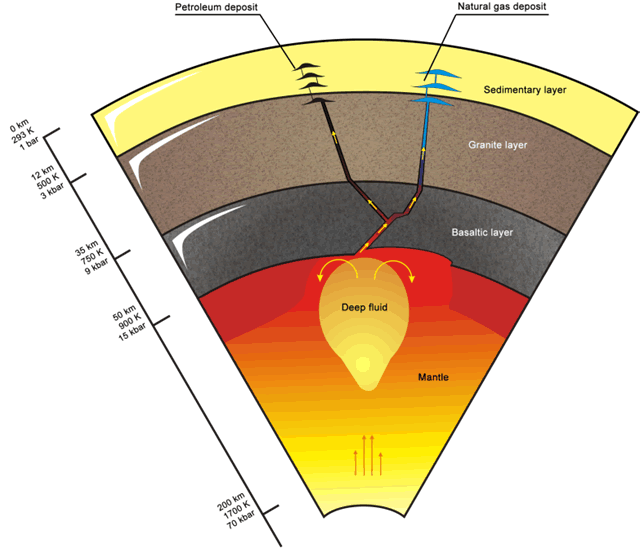

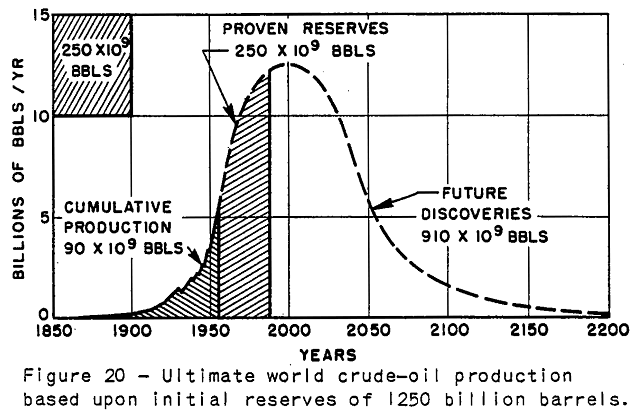
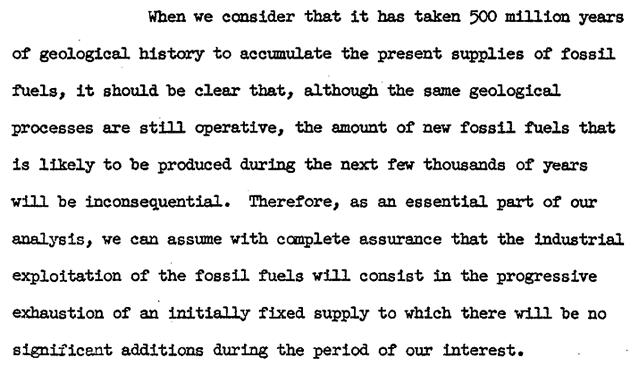
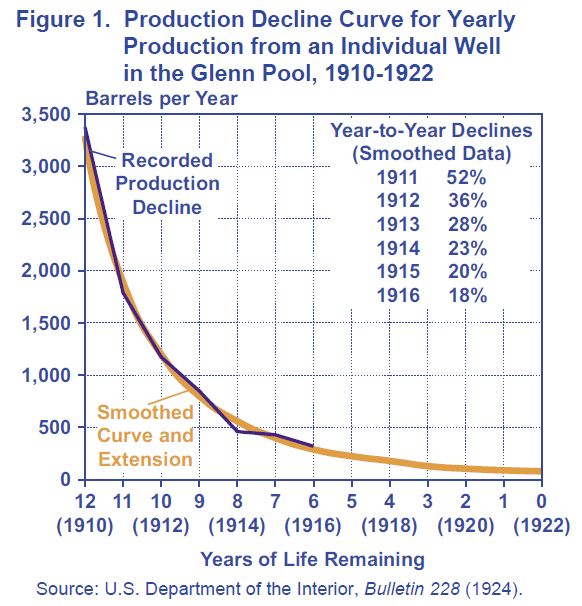

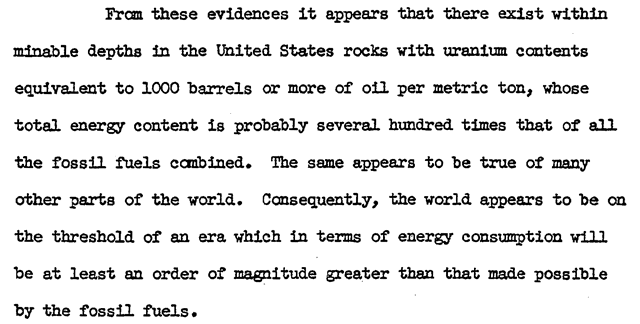
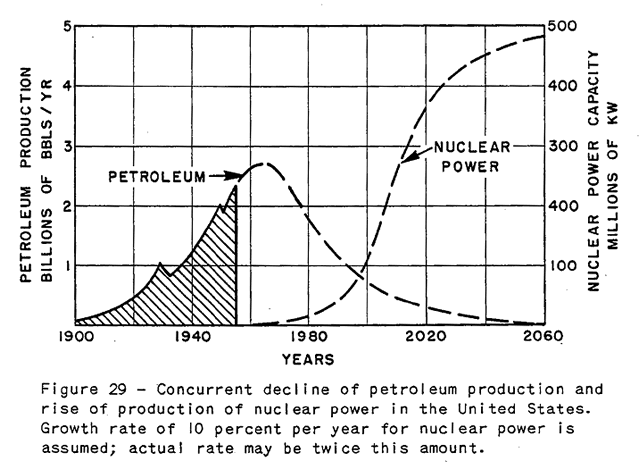

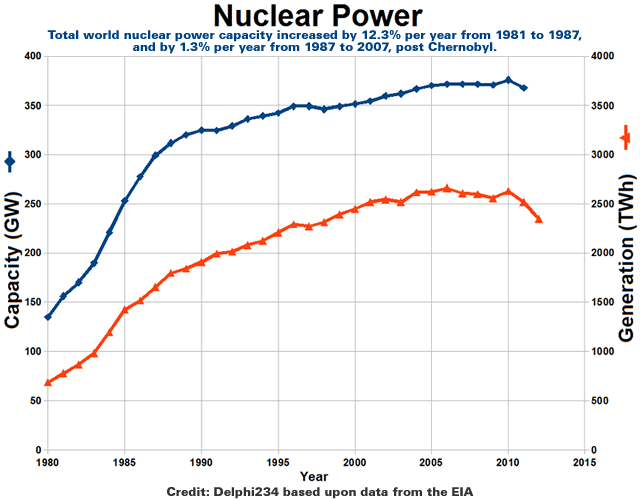
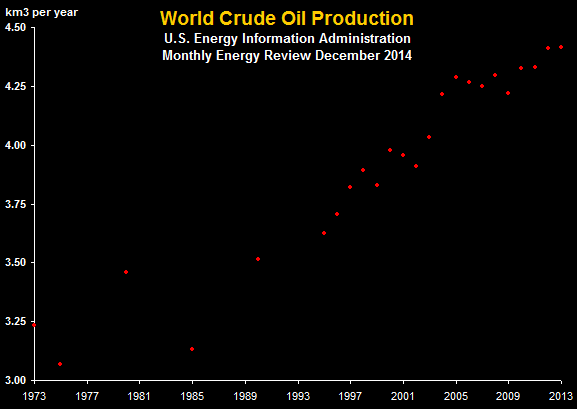
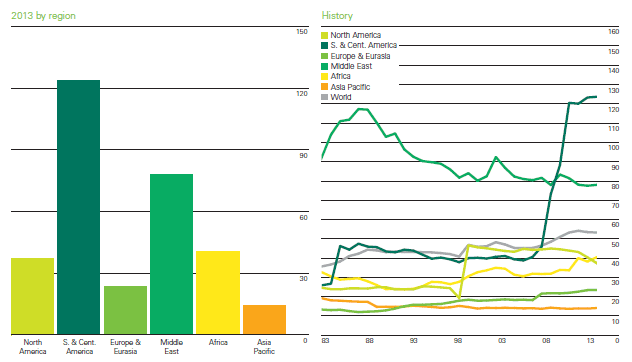
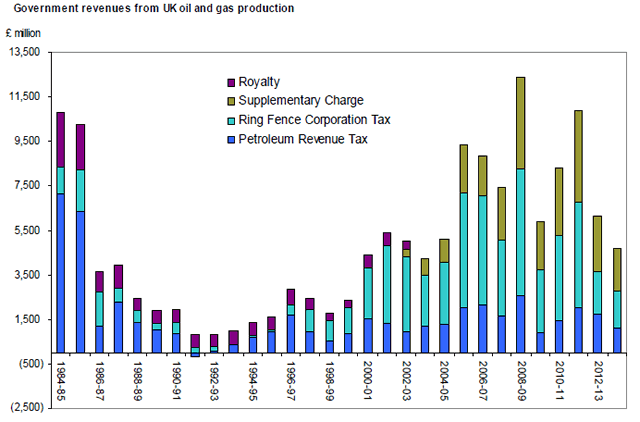
One really needs to sink Her Brittanic Majesty’s Chief Theoriser, Sir Charles Lyell to rout the fossil fuelers.
Love it. With you all the way. Are you familiar with the work of Thomas Gold?
You state the case for abiogenic hydrocarbons very well. Especially interesting in view of the fact that there exists an alternative physical/chemical explanation for the source of hydrocarbons, proposed by Vladimir Larin in his book Hydridic Earth. However, this too does not comport with settled science. Also, the lumping together of coal, oil and gas by the fossilists confuses the issue. Yes, these are all fuels. No, they were not formed by one process. Whereas coal gives clear evidence of it’s origin, at least in part, in buried plant matter. The evidence for a biotic origin of oil and gas is not so clear. And to assume that because some methane is produced near the surface by decomposition of once-living material (swamp gas), therefore ALL methane is the result of similar processes, is an unwarranted conclusion.
Thomas Gold [and especially his comments on helium] deserves a very special mention.
Thanks for the reminder – Tim
The Poseidon nickel mine in the Yilgarn craton of Western Australia has a methane problem underground. The craton is Archaean in age.
Coal is sublimated methane that replaces buried vegetation. Coal is not formed by compression due to burial.
Pingback: The English Inkblot Test | MalagaBay
Pingback: The Arabian Horizon – The Liwa Impact | MalagaBay
History In The Making: Oil Settles At Negative $37.63 Per Barrel
Zero Hedge – Tyler Durden – 20 April 2020
https://www.zerohedge.com/markets/historic-oil-crash-sends-canadian-oil-prices-negative
What is happening today is trades or speculators who had bought the contract are finding themselves unable to resell it, and have no storage booked to get delivered the crude in Cushing, OK, where the delivery is specified in the contract.
This means that all the storage in Cushing is booked, and there is no price they can pay to store it, or they are totally inexperienced in this game and are caught holding a contract they did not understand the full physical aspect of as the time clock expires.
Here Is The Full Explanation Behind Today’s Unprecedented Negative Oil Price
Zero Hedge – Tyler Durden – 20 April 2020
https://www.zerohedge.com/markets/here-full-explanation-behind-oils-unprecedented-negative-price